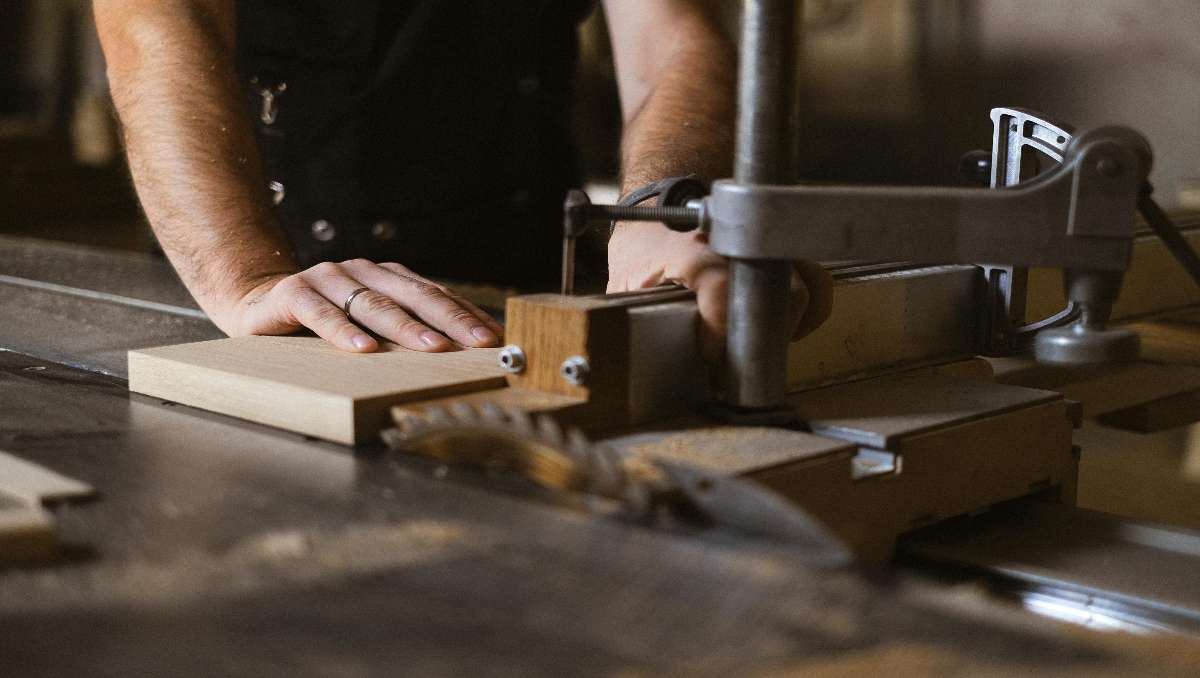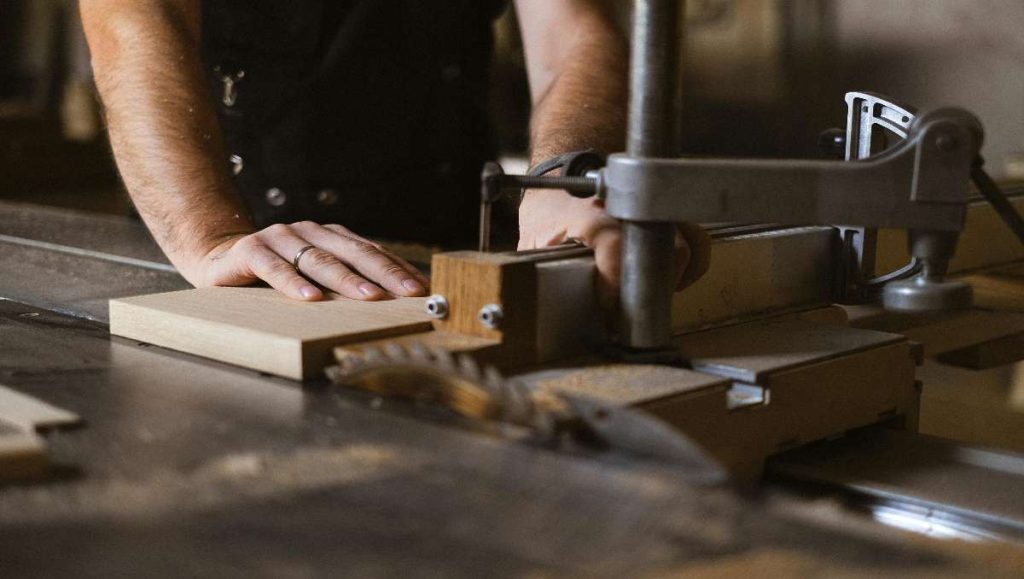
When it comes to Amish furniture, craftsmanship is not just about the materials—it’s about the details. One of the most important aspects of this craftsmanship lies in the furniture joints. These joints are the unsung heroes of Amish furniture, providing both strength and beauty to each piece. Unlike modern factory-made furniture, which often relies on screws and nails, Amish furniture is renowned for its time-honored joinery techniques that have been passed down through generations.
Key Takeaways
- Amish furniture is built with strong, traditional joints like mortise and tenon or dovetail, which make it durable and give it a timeless, handcrafted look.
- Because Amish furniture is made with sturdy wooden joints instead of metal fasteners, it lasts for generations, reducing the need for repairs or replacements over time.
- By avoiding nails and screws, and using high-quality wood, Amish furniture is more sustainable and has a lower environmental impact, lasting longer without needing to be replaced.
This article explores the types of joints used, the benefits they bring, and why Amish craftsmanship makes such a lasting difference.
Types of Furniture Joints Used by Amish Craftsmen
Furniture joints are the points where two or more pieces of wood connect in furniture-making. They play a critical role in determining the structural integrity, durability, and aesthetic appeal of furniture. Different types of joints are used based on the specific requirements of the piece, including load-bearing capacity, ease of construction, and the desired visual style.
Amish craftsmen use a range of traditional joints to create furniture that’s both sturdy and beautiful. Each joint type serves a specific purpose, adding to the strength and design of every piece.
Mortise and Tenon Joints
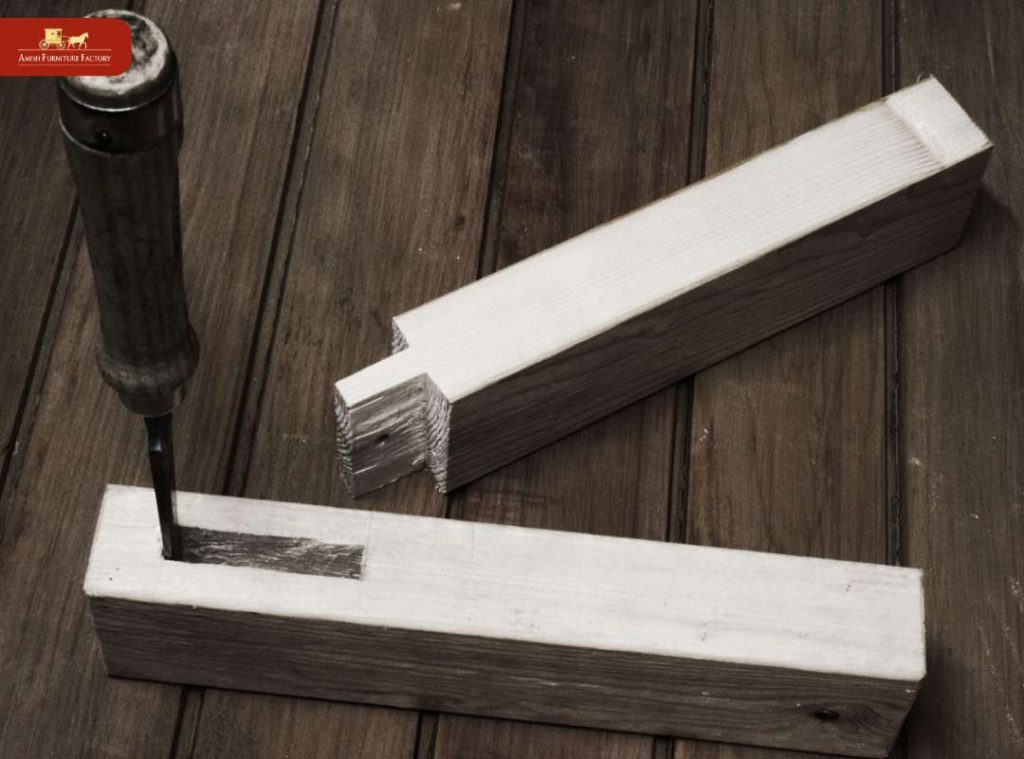
The mortise and tenon joint is one of the oldest and most reliable techniques in furniture-making. It involves fitting a “tenon” (a protruding piece of wood) into a corresponding “mortise” (a hole or slot in the other piece). This strong, stable connection is ideal for furniture frames and legs, providing excellent support.
Dovetail Joints
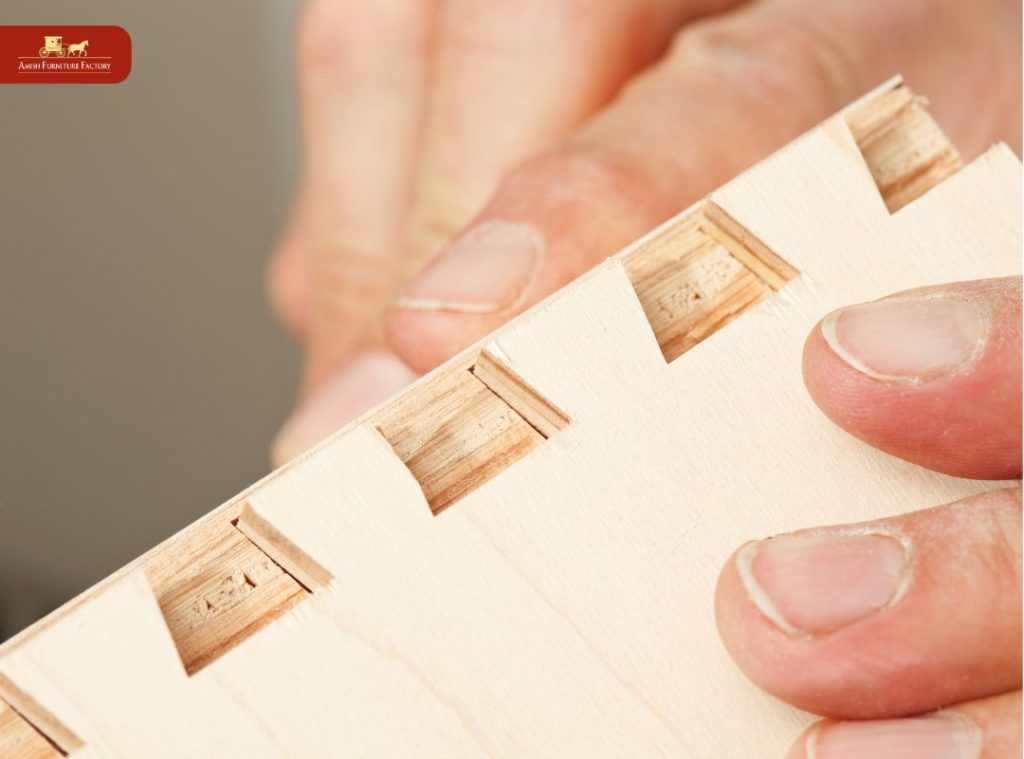
Dovetail joints are instantly recognizable for their interlocking “fingers” that fit together like puzzle pieces. This joint is commonly used in drawers, boxes, and cabinet construction. It is highly durable, as the fit resists pulling apart, making it ideal for areas subjected to frequent use. The intricate design also adds a decorative touch, showcasing the craftsmanship of the maker.
Dowel Joints
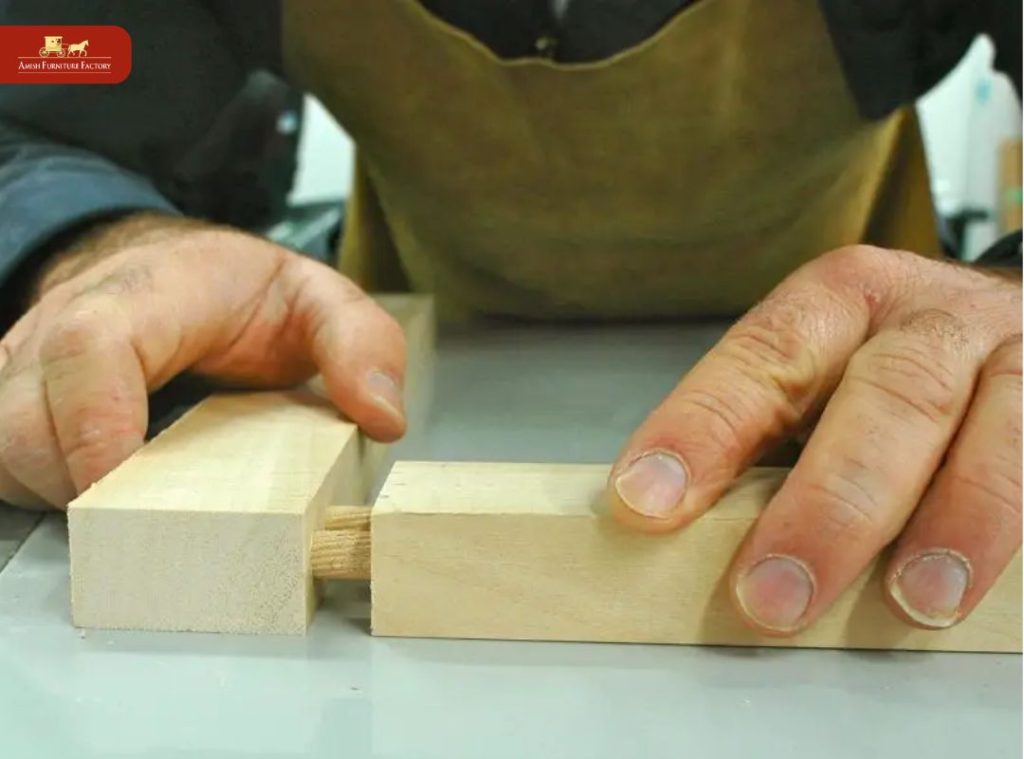
In dowel joints, small cylindrical wooden pegs (called dowels) are inserted into aligned holes in two pieces of wood. This method provides a smooth, secure connection without the need for metal fasteners. Dowels are often used in frames and table aprons, where discreet reinforcement is needed.
Finger Joints
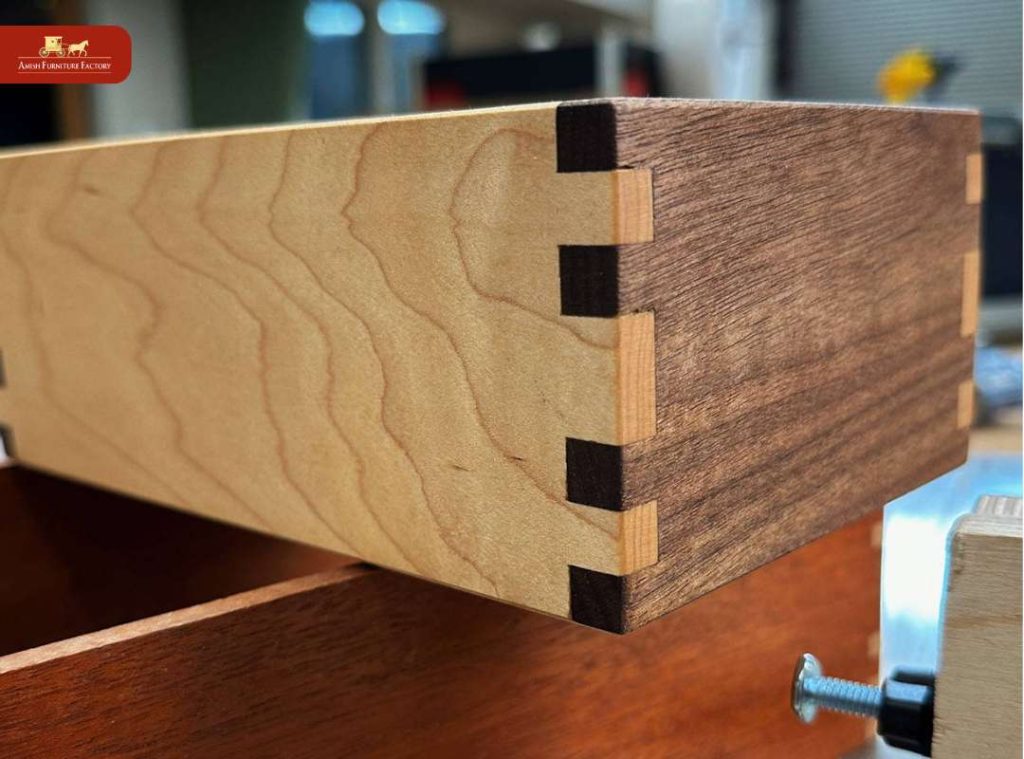
Finger joints, also known as box joints, involve interlocking rectangular cuts at the ends of two pieces of wood. These joints are often used in corners, providing both strength and a visually appealing edge. Finger joints are commonly seen in larger wooden boxes or storage pieces.
Lap Joints
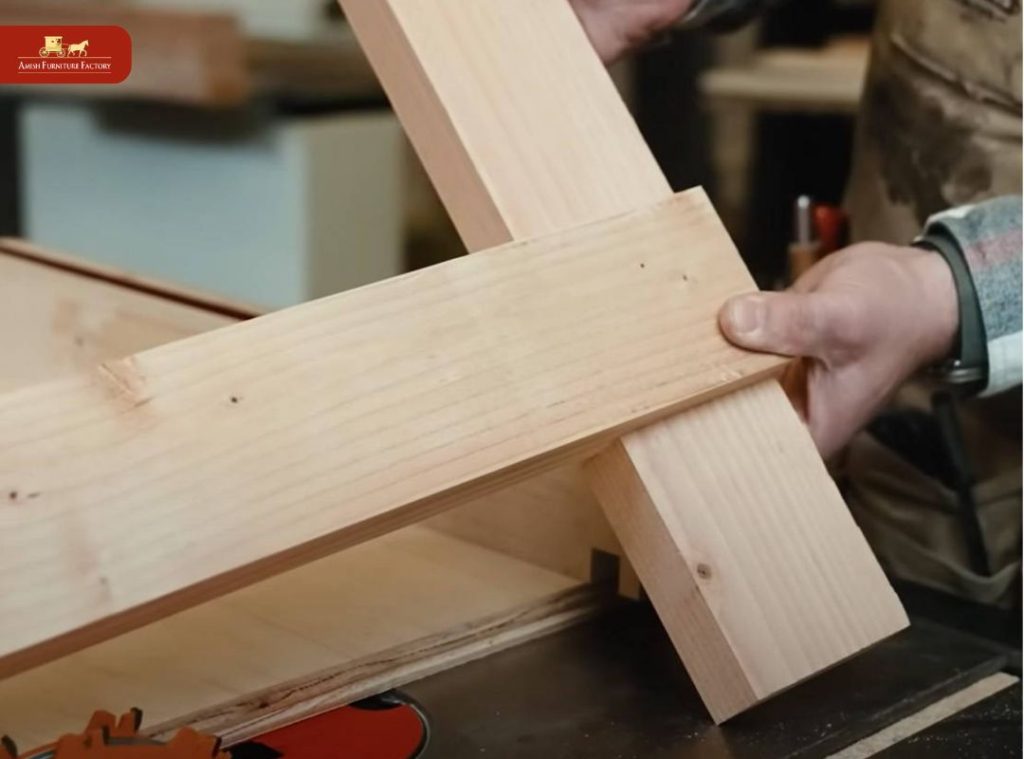
A lap joint is created by overlapping two pieces of wood, forming a flat, strong connection. This joint is typically used in areas where minimal thickness is needed, such as in the supports for tables and chairs. Amish craftsmen often use lap joints to reinforce structural elements without adding bulk.
Biscuit Joints
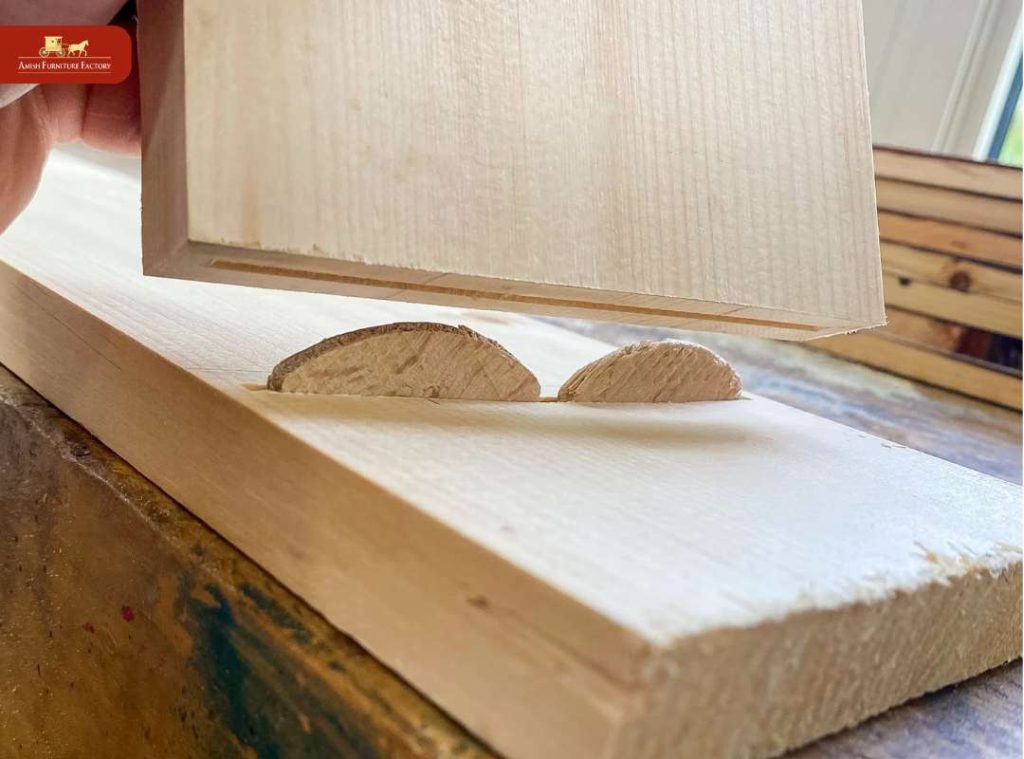
Biscuit joints use oval-shaped wooden pieces, called biscuits, which fit into matching slots in two pieces of wood. When glued, the biscuit expands to form a tight bond, aligning and strengthening the joint. Biscuit joints are commonly used for aligning tabletops or cabinetry.
Benefits of Traditional Furniture Joints in Amish Furniture
Amish furniture is known for its exceptional craftsmanship. A key factor in its durability, beauty, and sustainability lies in the use of traditional wooden joints instead of nails or screws. These joints reflect the Amish dedication to quality, and here’s why they are so important:
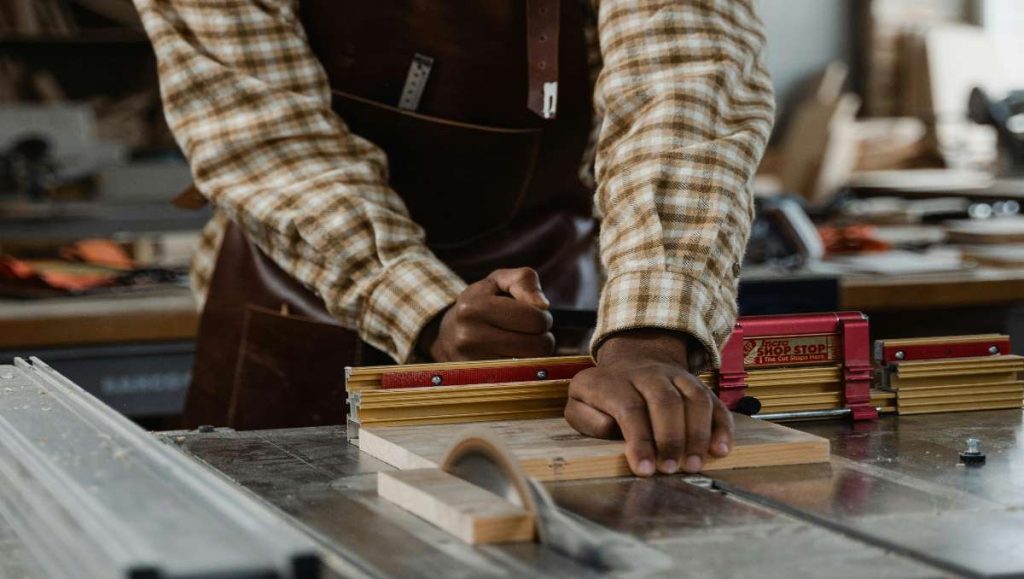
Here’s why these joints play such a key role in Amish pieces:
Exceptional Durability and Strength
Traditional joints like mortise and tenon, dovetail, and dowel are designed for lasting strength. Unlike metal fasteners, which can loosen or weaken over time, these wooden connections form tight, secure bonds that improve with age. Amish furniture is built for daily use and last for generations.
Aesthetic Appeal and Timeless Craftsmanship
The precision required to create these joints is often visible in the finished product, with dovetail joints commonly left exposed as a decorative feature. The seamless, metal-free construction creates a clean, natural look that aligns with the minimalist aesthetic of Amish designs. These techniques, rooted in centuries-old traditions, demand great skill and attention to detail, adding heirloom-quality value to each piece.
Sustainability and Eco-Friendliness
By relying on traditional joinery and avoiding metal fasteners, Amish furniture is more environmentally friendly. There’s less use of synthetic materials like adhesives or screws, reducing the environmental footprint. The durability of these pieces also means they don’t need frequent replacement, making them a more sustainable choice.
Avoidance of Metal Fasteners
Amish craftsmen avoid metal fasteners, which can rust, loosen, or detract from the furniture’s appearance. Strong wooden joints ensure lasting stability without compromising aesthetics, and they help preserve the wood’s natural beauty by avoiding visual disruptions from screws or nails.
Flexibility in Design
Wooden joints, such as mortise and tenon, allow for slight movement, which is important in areas with varying humidity and temperature. This flexibility helps prevent cracking or loosening over time, ensuring the furniture maintains its structural integrity even in changing climates.
Amish Furniture Joints vs. Modern Furniture Joints
Amish and modern furniture joints represent two different worlds of furniture-making. The Amish furniture is carefully handcrafted, using traditional joints that make each piece solid and long-lasting.
By contrast, modern furniture often relies on quick techniques like cam locks and screws, which speed up production but aren’t always as durable. Amish furniture, built from solid hardwood, can handle generations of use, while modern options, often made with particleboard, can weaken or break over time.
The exposed joints in Amish furniture, like dovetails, add to its charm and showcase skilled craftsmanship, while modern joints are usually hidden for a sleeker look. When it comes to repairs, Amish furniture is easier to work with due to its sturdy materials, while modern pieces can be challenging to fix.
Amish furniture also has a smaller environmental impact since it’s long-lasting without synthetic materials. Although Amish furniture is more expensive upfront, its durability can make it a worthwhile investment, whereas modern furniture may need replacing sooner.

How to Identify Quality Furniture Joints in Amish Furniture
Identifying quality furniture joints in Amish furniture can help ensure you’re purchasing a piece that is durable, well-crafted, and likely to last for generations. Here are some key things to look for in quality Amish furniture joints:
1. Look for Dovetail Joints in Drawers
What to Check: Open a drawer and look for dovetail joints along the corners. High-quality dovetail joints will be tight, with no visible gaps, and the “tails” and “pins” should fit snugly. The joint should be smooth and even, showcasing the skill of the craftsman.
2. Check for Mortise and Tenon Joints in Frames
What to Check: Look closely at the furniture frame, especially where legs join the tabletop or arms attach to chair frames. Mortise and tenon joints should feel solid and seamless, with no visible gaps or wobbling, indicating a tight fit.
3. Observe the Use of Wooden Dowels
What to Check: Gently feel along the joined areas for a seamless connection. Dowels should be invisible or subtly embedded, and the joint should feel secure and solid without visible glue or filler around the connection.
4. Look for Seamless Edge Joining in Tabletops
What to Check: Examine the tabletop for evenness and alignment of the wood grain. The seams between boards should be almost invisible, with no noticeable gaps or misalignments. The surface should feel smooth to the touch, without any visible ridges between boards.
5. Inspect Rabbet and Dado Joints in Cabinets and Shelving
What to Check: Look at the inner corners of cabinets and shelves for a snug, gap-free fit between pieces. These joints should look natural and stable, with no signs of warping or shifting.
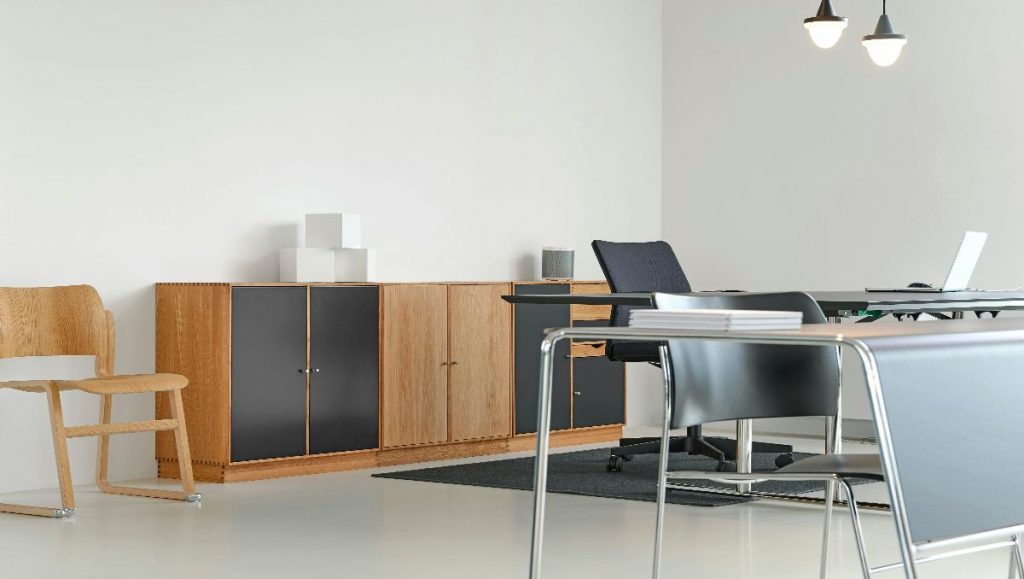
6. Avoid Visible Nails, Screws, or Metal Fasteners
What to Check: Inspect the furniture for minimal use of nails or screws, especially in structural areas. Instead, the joints should be secure and smooth, showcasing wood-on-wood connections without visible metal.
7. Ensure Precision in Finger and Box Joints
What to Check: Look for tight interlocking “fingers” in the joint, with no gaps or looseness. The cuts should be clean and precise, and all fingers should be evenly spaced and flush with each other.
8. Test the Joint Stability and Feel
What to Check: Gently shake the piece, such as a chair or table. If the joints are well-crafted, the piece should feel sturdy and stable. Chairs should not creak or shift when there is weight, and tables should feel secure even when slight pressure is applied to the edges.
Experience the timeless durability of Amish craftsmanship in your home. Visit Amish Furniture Factory to explore our collection built with traditional furniture joints.
9. Look for Consistency in the Wood Grain and Finishing
Quality Amish furniture often uses solid wood rather than veneers or laminates, and this applies to joints as well. Consistent wood grain and finishes indicate that the joint and wood are solid.
What to Check: Examine the grain on connected pieces to see if it flows naturally from one piece to the other, especially in visible areas. High-quality Amish furniture will show a harmonious, finished look across all visible joints and surfaces.
Built to Last: The Value of Amish Furniture Joints
Amish furniture has strong, traditional joints that make each piece last for generations. Unlike modern furniture, which often focuses on fast assembly, Amish craftsmanship values quality and durability. These time-tested joints give Amish furniture its strength, character, and unique appeal. For those who want reliable, beautiful furniture that stands the test of time, Amish pieces are a solid choice.
FAQs
Do Amish furniture makers use nails or screws?
In most cases, Amish furniture makers avoid nails and screws, relying on traditional wood joints instead. This approach strengthens the piece without visible metal fasteners, enhancing its look and durability. However, they may use screws sparingly for added stability in specific areas.
Are furniture joints in Amish furniture handcrafted?
Yes, the joints in Amish furniture are typically handcrafted by skilled artisans. Each joint is carefully fitted to ensure strength and precision, with minimal machinery used in the process. This craftsmanship is what makes Amish furniture unique and long-lasting.
How long does furniture with traditional joints last?
Furniture with traditional joints can last for decades, and in many cases, even generations. The strength of these joints, combined with quality hardwood, helps the furniture withstand daily wear. With proper care, you can pass down Amish furniture as an heirloom.
Can furniture joints be repaired if they become loose?
Yes, you can repair loose joints in Amish furniture by re-gluing or adjusting the fit. Since the joints are made from wood, repairs are often straightforward and don’t require replacing metal parts. Regular maintenance can help keep joints tight and sturdy over time.
Is Amish furniture worth the investment?
Amish furniture is definitely worth the investment due to its durability and craftsmanship. While it may be more expensive upfront, the quality materials and construction mean it can last for generations. This long-term value makes it a reliable choice for those looking for lasting furniture.
